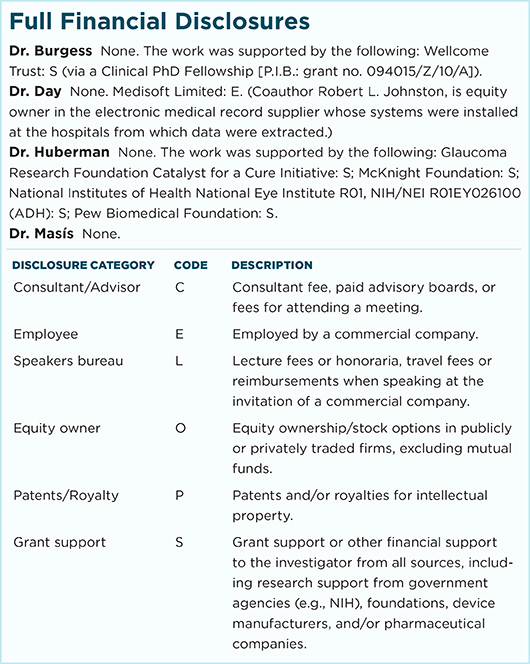Download PDF
Althouth the International Diabetes Foundation estimates that the number of adults diagnosed with diabetes in Africa will increase from 12.1 million in 2010 to 23.9 million in 2030, there is a paucity of evidence on diabetic eye disease in that continent. Recently, however, the first prospective longitudinal study of diabetic retinopathy (DR) from sub-Saharan Africa has been published by researchers with the Malawi Diabetic Retinopathy Study (MDRS) to characterize the incidence, progression, and factors associated with DR in patients at 2 diabetes clinics in southern Malawi.1
Striking difference in DR progression. According to lead author Philip I. Burgess, MRCS(Ed), PhD, a retina specialist with the Malawi-Liverpool-Wellcome Trust Clinical Research Programme, the most important finding is the high rate of progression to sight-threatening diabetic retinopathy seen in the MDRS patients—the rate is approximately 3 times that reported in recent European studies.
Multiple factors contribute to this disparity, Dr. Burgess said: “The agenda is dominated at a national level by poorly resourced health services and at a community level by poverty. A major challenge is lack of patient knowledge of the disease and the logistics of accessing care on a regular basis. Throughout sub-Saharan Africa, referral pathways between diabetes clinics and ophthalmic services are underdeveloped and poorly organized.”
Reasons for hope. Despite these troubling findings, Dr. Burgess noted that a number of DR detection and treatment programs have recently been developed in African countries. He cited the Kilimanjaro Diabetic Programme in northern Tanzania as an example of an integrated, clinic-based, mobile photographic retinal screening service. Another important development is the Commonwealth Diabetic Retinopathy Network, in which U.K. eye units partner with centers in low- and middle-income countries.
Although DR screening and care delivery models from industrialized countries are unlikely to be adopted in resource-poor settings, he said, “New technologies including portable fundus cameras and automated grading of retinal images will help deliver cost-effective services in African countries.”
The MDRS progression data can be an important aid in planning the introduction of programs for prevention, early detection, and management of DR in the region, said Dr. Burgess. “Our findings represent a baseline against which the efficacy and cost-effectiveness of such interventions can be judged.”
A surprising finding. The most unexpected finding in the study, said Dr. Burgess, was a negative association between HIV infection and DR progression. “HIV infection and antiretroviral agents are associated with macro- and microvascular pathology. We therefore expected those subjects with HIV and diabetes to demonstrate increased rates of DR progression.” A possible confounder is that people with HIV receiving antiretroviral drugs already have contact with health services, so their diabetes might have been diagnosed earlier. And, more ominously, “In our study, subjects with HIV and diabetes had a very high mortality rate (approximately 18% in 24 months), which may have reduced the observed rate of DR progression in this group,” he said.
Ways to help. Ophthalmologists and allied health professionals from high- and middle-income countries have an important role to play in the development of services for diabetes and DR in African countries, said Dr. Burgess, but it must be done in partnership with local clinicians, using a systematic approach to planning for sustainability and accessibility. “Long-term partnerships between institutions are most likely to provide the most benefit for all parties. Provision of subspecialty training to local ophthalmologists either in their country of origin or elsewhere is extremely important” and will facilitate the development “of local clinician-scientists who can provide health policy leadership in the region.”
—Peggy Denny
___________________________
1 Burgess PI et al. Ophthalmology. Published online July 9, 2016. doi:10.1016/j.ophtha.2016.05.042.
___________________________
Relevant financial disclosures—Dr. Burgess: None.
For full disclosures and disclosure key, see below.

More from this month’s News in Review